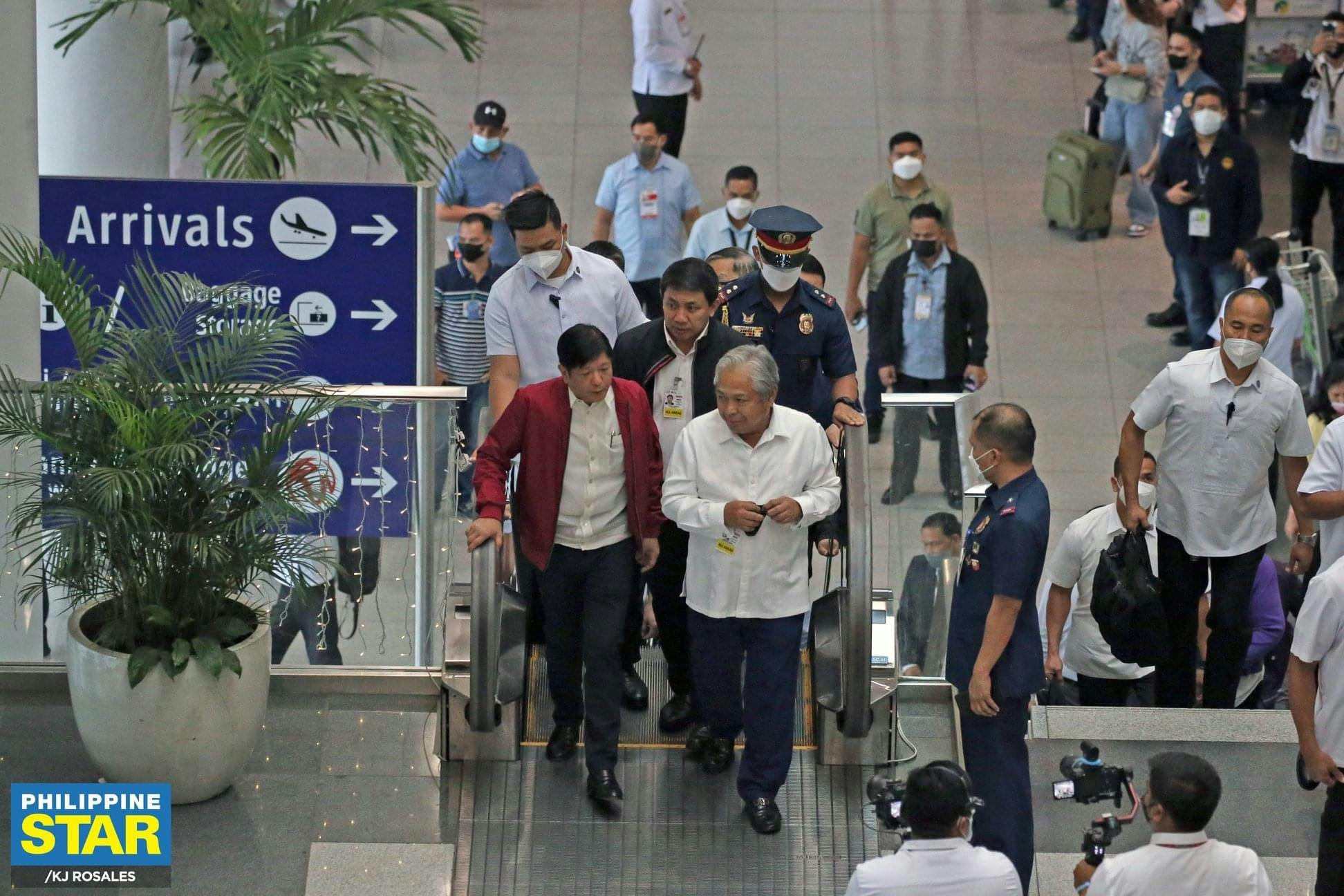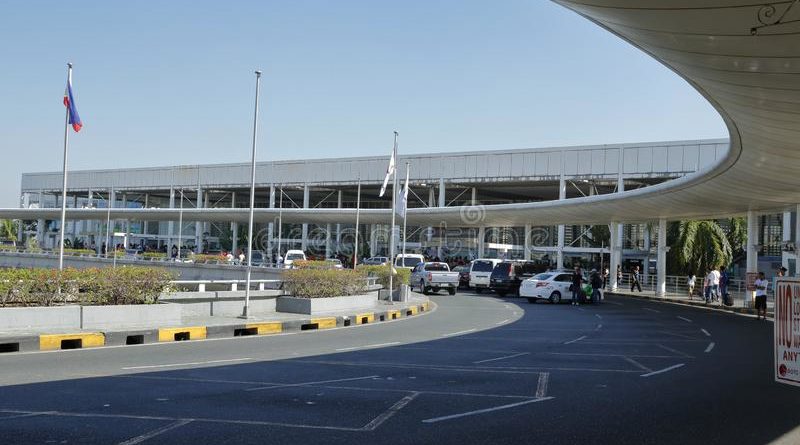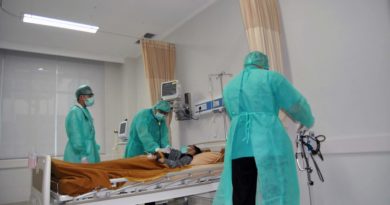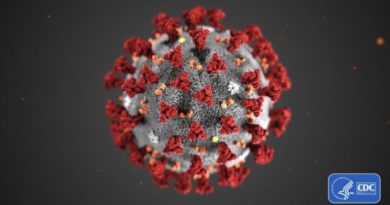HEADLINE | MANILA- Marcos-BBM gives go-signal for NAIA privatization
Politics & Other News Features
Marcos Gives Go-Signal For NAIA Privatization

The Marcos administration will push through this year with the privatization of the Ninoy Aquino International Airport (NAIA), Transportation Secretary Jaime Bautista disclosed during the inquiry of the Senate public services committee into the Jan. 1 airspace shutdown.
“We confirm that this government is planning to privatize the operations of Manila international airport. And we are open to a solicited or unsolicited proposal, although we prefer to have a solicited proposal,” Bautista said on Thursday, Jan. 12, in response to Sen. Grace Poe’s questions on proposals to privatize the country’s main gateway.
“We’d see to it that we will work at the faster privatization of NAIA. And right now it’s the only major airport in Metro Manila. It has reached its rated capacity. It even exceeded its rated capacity. That’s why we need to improve and modernize the NAIA,” he said.
Bautista said the airport can handle 40 to 44 movements per hour, but with newer technology to be used by private operators, the rate can be improved to 50 to 55 movements per hour, like the one utilized by the operator of an airport in the United Kingdom that has only one runway, similar to NAIA.
Poe, who chairs the committee, recalled talks for privatization were underway in 2017 and the concession agreement with the winning consortium was approved.
The deal, however, fell through over disagreements on provisions on material adverse government action or where the government might take or not take certain acts that will cause the private proponent to fail to fulfill its end of the contract, she said.
Bautista said the government is working with the Asian Development Bank and the Public-Private Partnership Center in drawing up the terms of reference for interested parties that may be finalized in the first quarter of the year so that the proposal can be accepted.
Resolution
Bautista also told the panel that the Department of Transportation (DOTr) is fast-tracking the resolution of its dispute with Sumitomo and Thales, the contractor and supplier for the Communications, Navigation and Surveillance/Air Traffic Management (CNS/ATM) system with the negotiations starting last September.
Sumitomo and Thales are claiming a total of P986.6 million for price escalation and other claims after the Commission on Audit issued a notice of disallowance on the payments to them in 2011, only to reverse this in 2013 that led to delays in the completion of the project funded by loans from the Japan International Cooperation Agency.
The DOTr also has some claims to the suppliers on the same issue of delays. Both sides are still in the process of reconciling facts surrounding the delays. The resolution of the claims is important as Thales refuses to enter into a contract with the government to run the CNS/ATM unless its claims are settled.
Meanwhile, Sen. Francis Tolentino urged the Civil Aviation Authority of the Philippines (CAAP) to take advantage of the 1944 Chicago Convention on International Civil Aviation (ICAO) that could help modernize the country’s existing air traffic control system.
Tolentino said under Article 70, in which signatory countries – which include the Philippines – may seek assistance from the ICAO council to fully finance the up-grade of existing air navigation facilities, without paying a single centavo.
He said the Philippines may qualify to seek assistance from the ICAO council to upgrade its air navigation equipment if the country’s transportation officials can prove to the international body that existing facilities “are not reasonably adequate for the safe, regular, efficient and economical operation of international air services, present or contemplated,” as stated in Article 69 of the 1944 pact.
Too early
Senators said it was too early to say whether or not CAAP officials should be prosecuted criminally and administratively for the mess that was attributed to negligence and incompetence.
“We are still waiting for their forensic investigation to give us a clearer picture of exactly what happened that morning when the equipment went down. As of now they are giving general statements that have opened more questions, such as the follow-up maintenance checks which should have been done by the manufacturer of the equipment themselves aside from our own CAAP personnel alone,” Senate President Juan Miguel Zubiri told reporters.
Sen. Jinggoy Estrada scored the lack of security cameras in the equipment room where the faulty circuit breaker was housed.
Sen. Risa Hontiveros said CAAP officials can possibly be charged with administrative liability if it becomes clear that their lack of management of long-time security and maintenance issues really endangered many lives.
“After a six-hour hearing, we were still in the dark. And apparently so was CAAP. Instead of getting their facts straight for the sake of aviation safety, they again and again attempted to deflect accountability. No critical questions were answered, and only more problems came to light,” Hontiveros said.
Senate Majority Leader Joel Villanueva found the explanations of CAAP and DOTr officials “lacking and did not give us clarity on what really transpired, and assurance that a similar incident will not happen again.”
Senators said they may order a closed-door briefing with officials of the Cybercrime Investigation and Coordinating Center (CICC) of the Department of Information and Communications Technology to try to get to the bottom of the incident.
CAAP director general Manuel Tamayo told the committee that the CICC looked into the incident on Jan. 3 and initially found no cyberattack on the CNS/ATM.
However, the CAAP still turned over the faulty circuit breaker that the agency said caused the power outage of its air traffic management system to the CICC for forensic investigation. – With additional reports from Rudy Santos
.
 Ads by: Memento Maxima Digital Marketing@[email protected] RESERVE FOR ADVERTISTMENT
Ads by: Memento Maxima Digital Marketing@[email protected] RESERVE FOR ADVERTISTMENT


 Transportation Secretary Jaime Bautista said the government is working with the Asian Development Bank and the Public-Private Partnership Center in drawing up the terms of reference for interested parties.
Transportation Secretary Jaime Bautista said the government is working with the Asian Development Bank and the Public-Private Partnership Center in drawing up the terms of reference for interested parties. Memento Maxima Digital Marketing
Memento Maxima Digital Marketing






